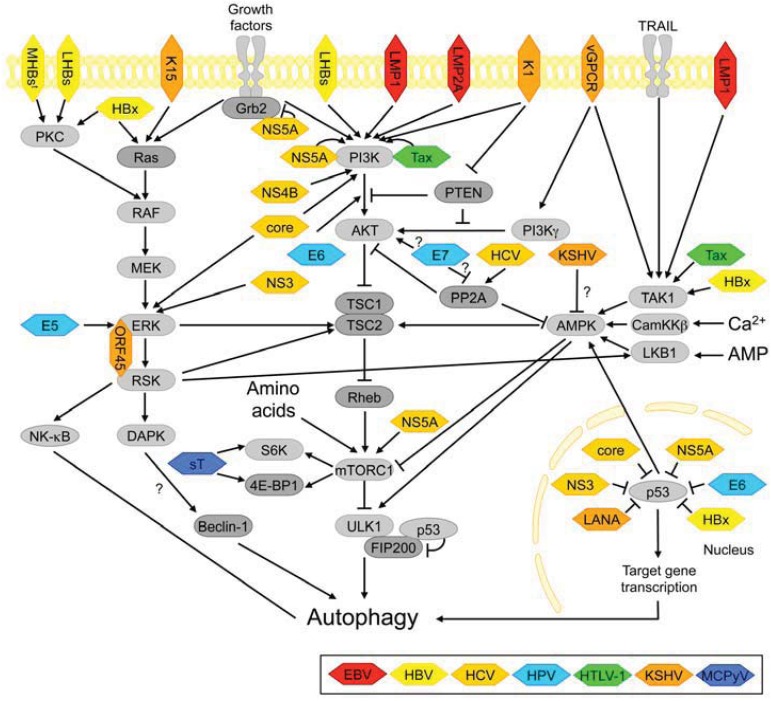Figure 3.
Autophagy regulation via nutrient- and growth factor sensitive signaling pathways and points of interference by viral proteins.
This figure gives a simplified overview of the cell’s nutrient and growth-factor regulated cellular signaling pathways: (1) the PI3K pathway and its important signaling mediators AKT, the TSC1/2 GTPase activating complex for the GTPase Rheb, which activates mTORC1, and mTORC1 (note: individual complex proteins have been omitted for clarity); (2) the RAF-MEK-ERK MAPK-module and (3) the AMPK pathway. Interactions of these pathways with the p53 tumor suppressor, which is commonly inactivated by viral oncoproteins are also shown. These pathways are directly connected to the autophagy machinery via the ULK1-kinase complex and Beclin-1. See main text for additional details. See Figure 4 for AKT- and TAK1 regulation of NF-κB signaling, regulation of Beclin-1 by JNK signaling and viral modulators of the JNK pathway, as well as additional upstream regulators, downstream mediators and viral modulators of TAK1 signaling. Mechanistic details on how viral proteins interfere with nutrient- and growth factor-regulated signaling pathways are discussed in the text, except for the following: HBV LHBs and MHBst signal to RAF via protein kinase C (PKC) [31]. HBx can also activate PKC [199]. HCV NS5A does not directly target mTOR but its regulator FKBP38 [200] and may inhibit ERK signaling by interacting with GRB2 [50,51]. Question marks indicate that it is currently unclear whether DAPK-phosphorylation of Beclin-1 occurs physiologically, which HCV-protein is involved in inhibition of PP2A, which KSHV protein is involved in inhibition of AMPK, and whether HPV E7 activates AKT via an retinoblastoma protein dependent or -independent mechanism involving PP2A [62,63]. Light grey rounded rectangles-host cell kinases; light grey ovals-host cell transcription factors; dark grey rounded rectangles-other host cell proteins; colored hexagons-viral proteins; : activation; to ⊥: inhibition. -: no general consensus in the literature on activation/inhibition, outcome may be cell type specific.

